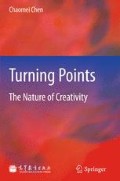Abstract
Identifying and supporting high-risk and high pay-off research has been one of the major concerns of science policy as well as individual scientists and their institutions. The National Science Foundation (NSF) has been concerned about identifying and funding transformative research for decades. The U.S. is not the only country that is experiencing the sense of urgency like the Gathering Storm we discussed at the beginning of the book. Research Councils UK (RCUK) considers high potential, high impact research as adventurous, speculative, innovative, exciting, creative, radical, groundbreaking, precedence setting, unconventional, visionary, challenging, ambitious, uncertain, mould-breaking or revolutionary (RCUK 2006). The Natural Sciences and Engineering Research Council of Canada (NSERC) defined the concept of risk based on unconventionality and an uncertainty of results (NSERC 2003).
Access this chapter
Tax calculation will be finalised at checkout
Purchases are for personal use only
Preview
Unable to display preview. Download preview PDF.
References
Chen, C. (2003). Mapping scientific frontiers: The quest for knowledge visualization. London: Springer.
Chen, C. (2006). CiteSpace II: Detecting and visualizing emerging trends and transient patterns in scientific literature. Journal of the American Society for Information Science and Technology, 57(3), 359–377.
Chen, C., Chen, Y., Horowitz, M., Hou, H., Liu, Z., & Pellegrino, D. (2009). Towards an explanatory and computational theory of scientific discovery. Journal of Informetrics, 3(3), 191–209.
Chen, C., Ibekwe-SanJuan, F., & Hou, J. (2010). The Structure and dynamics of co-citation clusters: A multiple-perspective Co-Citation Analysis. Journal of the American Society for Information Science and Technology, 61(7), 1386–1409.
Gold, T. (1968). Rotating neutron stars as origin of pulsating radio sources. Nature, 218(5143), 731–732.
Härynen, M. (2007). Breakthrough research: Funding for high-risk research at the Academy of Finland. Helsinki: The Academy of Finland.
Hewish, A., Bell, S.J., Pilkington, J.D.H., Scott, P.F., & Collins, R.A. (1968). Observation of a rapidly pulsating radio source. Nature, 217(5130), 709–713.
Lee, Y.G., Lee, J.D., Song, Y.I., & Lee, S.J. (2007). An in-depth empirical analysis of patent citation counts using zero-inflated count data model: The case of KIST. Scientometrics, 70(1), 27–39.
Lipinski, G., & Hopkins, A. (2004). Navigating chemical space for biology and medicine. Nature, 432(7019), 855–861.
Lokker, C., & Walter, S.D. (2010). Prediction of citation counts: a comparison of results from alternative statistical models. Retrieved Oct 15, 2010, 2010, from http://www.bmj.com/content/336/7645/655/reply
Meadows, A.J., & O’Connor, J.G. (1971). Bibliographical statistics as a guide to growth points in science. Science Studies, 1(1), 95–99.
Price, D.D. (1965). Networks of scientific papers. Science, 149, 510–515.
Swanson, D.R. (1986). Fish oil, Raynaud’s syndrome, and undiscovered public knowledge. Perspectives in Biology and Medicine, (30), 7–18.
Takeda, Y., & Kajikawa, Y. (2010). Tracking modularity in citation networks. Scientometrics, 83(3), 783–792.
Author information
Authors and Affiliations
Rights and permissions
Copyright information
© 2011 Higher Education Press, Beijing and Springer-Verlag Berlin Heidelberg
About this chapter
Cite this chapter
Chen, C. (2011). Transformative Potential. In: Turning Points. Springer, Berlin, Heidelberg. https://doi.org/10.1007/978-3-642-19160-2_8
Download citation
DOI: https://doi.org/10.1007/978-3-642-19160-2_8
Published:
Publisher Name: Springer, Berlin, Heidelberg
Print ISBN: 978-3-642-19159-6
Online ISBN: 978-3-642-19160-2
eBook Packages: Computer ScienceComputer Science (R0)

